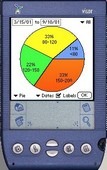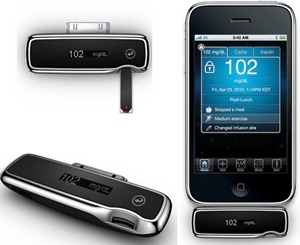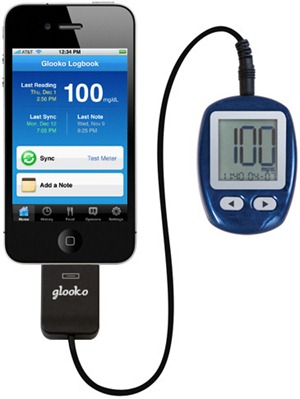 I've been diabetic for almost two decades. It's tiring, let me tell you. Here's a video of my routine when I change my insulin pump and continuous meter. I'm not looking for pity, sadness or suggestions for herbs and spices that might help me out. I'd just like a day off. Just a single day out of the last 7000 or the next, I'd like to have a single piece of pie and not chase my blood sugar for hours.
I've been diabetic for almost two decades. It's tiring, let me tell you. Here's a video of my routine when I change my insulin pump and continuous meter. I'm not looking for pity, sadness or suggestions for herbs and spices that might help me out. I'd just like a day off. Just a single day out of the last 7000 or the next, I'd like to have a single piece of pie and not chase my blood sugar for hours.
Every time I visit the doctor (I do every 3 months) and every time I talk to someone in industry (I do a few times a year) I'm told that there will be a breakthrough "in the next 5 years." I've been hearing that line - "it's coming soon" - for twenty.
I used to wait a minute for a finger stick test result. Now I wait 5 seconds but we still have blood sugar strips with +-20% accuracy. That means I can check my sugar via finger stick twice and get a number I'd take action on along with one I wouldn't. Blood sugar strip accuracy is appalling and a dirty little secret in the diabetes community.
I started with insulin that would reach its peak strength after about 4 hours. Today it takes about an hour. Awesome, but that's not fast enough when a meal can take me to the stratosphere in minutes.
We are hurting here and we can't all wait another five years. Diabetes is the leading cause of blindness, leading cause of kidney failure and leading cause of amputation.
I wrote the first Glucose Management system for the PalmPilot in 1998 called GlucoPilot and provided on the go in-depth analysis for the first time. The first thing that struck me was that the PalmPilot and the Blood Sugar Meter were the same size. Why did I need two devices with batteries, screens, buttons and a CPU? Why so many devices?
 In 2001 I went on a trip across the country with my wife, an insulin pump and 8 PDAs (personal digital assistants, the "iPhones" of the time) and tried to manage my diabetes using all the latest wireless technology. Here's what I had to say 11 years ago:
In 2001 I went on a trip across the country with my wife, an insulin pump and 8 PDAs (personal digital assistants, the "iPhones" of the time) and tried to manage my diabetes using all the latest wireless technology. Here's what I had to say 11 years ago:
With Bluetooth coming, why couldn't my [PalmPilot] monitor my newly implanted smart-pump? GlucoPilot could generate charts and graphics from information transmitted wirelessly from the pump. For that matter, the pump, implanted in my abdomen, could constantly transmit information to Bluetooth-enabled devices that surround me. The pump might use my cell phone to call in its data into a central server when I'm not using the phone. If I wander near my home computer, the pump or Visor might take the opportunity to upload its data. During a visit to the doctor, Bluetooth's 30-meter range could provide the doctor with my minute-by-minute medical history as I sat in the waiting room.
Back in 1998 when I was writing and marketing GlucoPilot I was using a custom cable that connected directly from my PalmPilot to the glucose meter and downloaded my historical glucose data. Fast forward to 2012 and what new technologicals innovation do we have?
Yes, that's a custom cable to plug-in to my PDA. Yes, I'm a frustrated diabetic. This a 15 year old solution with no backing standards, no standard interchange format, no central cloud to store the data in. It's vendor lock-in on both sides.
Kudos to the Glooko guys for fighting the good fight and shame on the blood sugar meter manufacturers for making their job hard.
Fifteen years ago we talked about data standards and interoperability. I was even on a standards board for a while to try and pressure the industry to standardize on data interchange formats. I have personally written multiple blood sugar meter data importers from the very simple (CSV) to the very complex (binary packed and purposely obscured to prevent 3rd party data dumps) and I can tell you that the blood sugar meter manufacturers are not interested in making it easy to move our data around. This is a billion dollar industry.
Today I read an article about the iBGStar (a forgettable name) glucose meter that plugs directly into an iPhone 30 pin port. The article came up on Hacker News and one of the designers said this in a comment:
I'm one of the designers of the iBGStar and we considered Bluetooth. We actually have another FDA cleared product that uses Bluetooth, but cost, battery life, and a bunch of technical issues led us to favor the 30 pin.
 This is hugely disappointing especially since Bluetooth 4.0 is said to offer battery life as long as 10 years on some products. Given all the new iPhones have Bluetooth 4.0 just waiting for devices to connect to, you'd think this is a perfect opportunity for a Bluetooth 4.0 glucose meter.
This is hugely disappointing especially since Bluetooth 4.0 is said to offer battery life as long as 10 years on some products. Given all the new iPhones have Bluetooth 4.0 just waiting for devices to connect to, you'd think this is a perfect opportunity for a Bluetooth 4.0 glucose meter.
I appreciate the attempts and the word that is being done in the space, I truly do, but as an end user when I see products like this that are trying to push the envelope but fail with fundamental usability issues, I'm saddened. Most diabetics check their blood sugar 10 times a day or more. I can't keep this glucose meter attached to my phone. It'll fall off, get bent, mess up the 30 pin connector. It's simply not reasonable for a day to day use coming in and out of pockets.
A more reasonable mode of usage would mirror the FitBit. It's tiny, clips to my belt and automatically notices when I pass by my computer then uploads its data wirelessly. That's how wireless is supposed to work. And the battery lasts at least a week.
Twenty years and no significant moves. We are still wiring our devices together, translating from one format to another, all the while being hamstrung by the FDA and their processes. When we do start to get something working well, it's attacked and we're told that our insulin pumps can be hacked from a mile away and we can be killed in our sleep. This will no doubt slow progress and make the FDA even more paranoid when approving new technology.
I've just this week switched from a Medtronic Continuous Glucose Meter to a DexCom, which is another company. This new CGM gives me more accurate data with less lag time. However, I still have the same insulin pump. This means my meter and pump aren't integrated so I carry another device on my person. This is because while the Animas Vibe, a pump that integrates both the DexCom meter and an insulin pump as well as other features like being waterproof, is available EVERYWHERE but the US. It's in the FDA process. Maybe ready in 6 months? 18? Who knows. When it shows up, the technology will be years old while the iPhone is on generation 6. We've got 3D TVs to watch crappy movies on by my insulin pump's firmware hasn't changed in nearly a decade.
The article about the iBGStar is poorly researched and galling. I appreciate what Hacker News commenter lloyd said with emphasis mine, calling out this inane line from the article.
"Could this be the beginning of mobile diabetes monitoring?"
As so many people above have stated, no, you moron. We've been monitoring blood sugar on the go for the past 30 years.
I've got Type 1 diabetes...and my current meter is smaller than the one shown here. I can plug it into my Mac via USB to download and visualize the data (& can control my insulin pump via bluetooth using the meter).
The only benefit with this particular iPhone-compatible meter would be enhanced, immediate visualization of results. Which might be easier to get, and might not, given the inconvenience of having to remove an iPhone case and plug in the meter. (Not to mention other issues - what if my iPhone's batteries are dead? Will it still work?)
Unfortunately, this product reminds me of 5 years ago, when someone would announce a new toaster, and the tech crowd wouldn't be impressed...unless it was a Bluetooth toaster. We're so focused on it being the hot new thing (it's compatible with iOS! Oooh!!) that we ignore the fact that there's nothing revolutionary being presented here.
The way I see it, this doesn't really change anything in terms of treatment. If it's a more accurate meter, great - sell based on that. Not on the bogus "we're taking blood glucose monitoring mobile" claims.
You may feel like technology is amazing and it's moving so very fast and it surely is. But as a diabetic who relies on technology to stay alive as along as I possibly can, it feels like nothing has changed in 20 years. Maybe something will happen in just 5 more.
Sponsor: I want to thank the folks at DevExpress for sponsoring this week's feed. Check out their DXperience tools, they are amazing. You can create web-based iPad apps with ASP.NET and Web Forms. I was personally genuinely impressed. Introducing DXperience 12.1 by DevExpress - The technology landscape is changing and new platforms are emerging. New tools by DevExpress deliver next-generation user experiences on the desktop, on the Web or across a broad array of Touch-enabled mobile devices.
© 2012 Scott Hanselman. All rights reserved.
